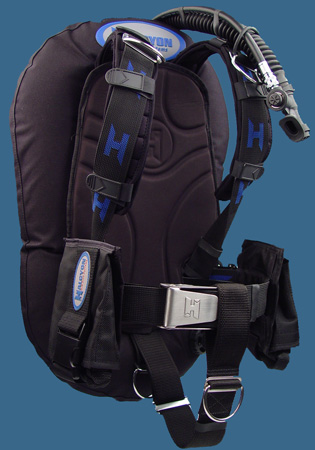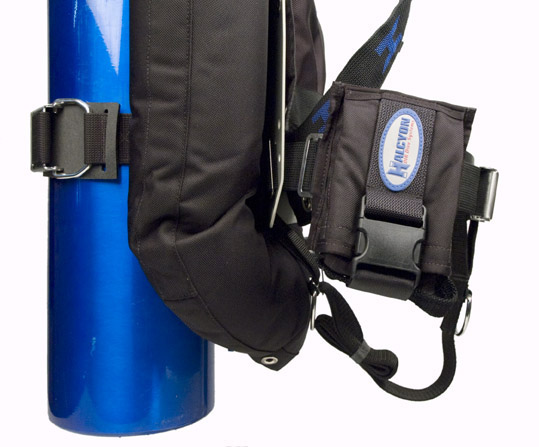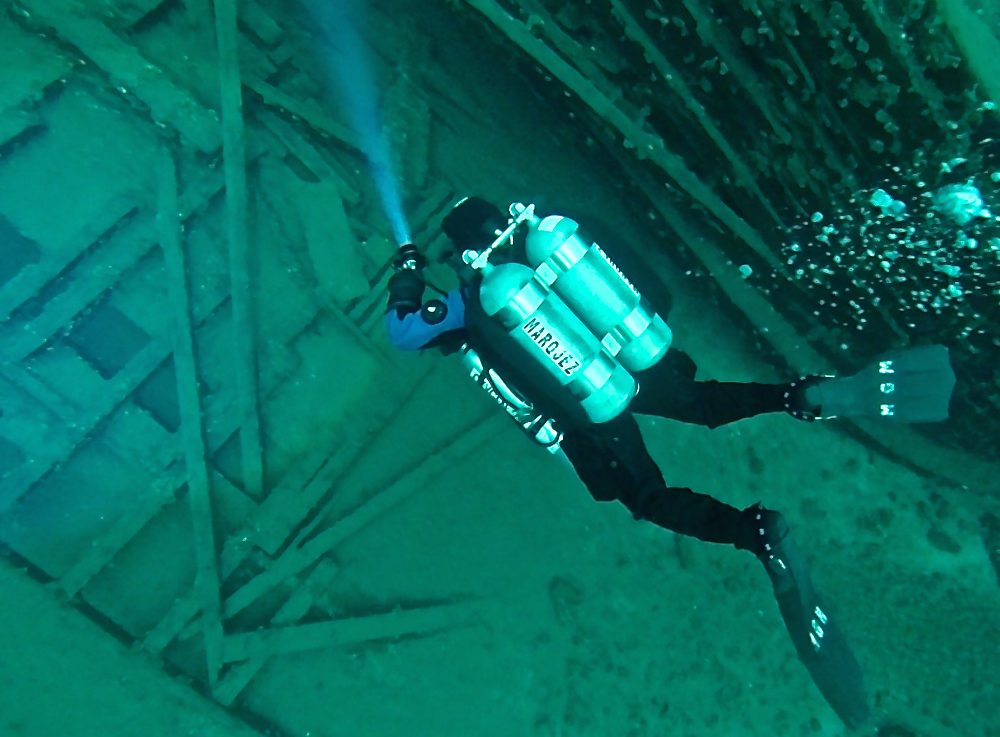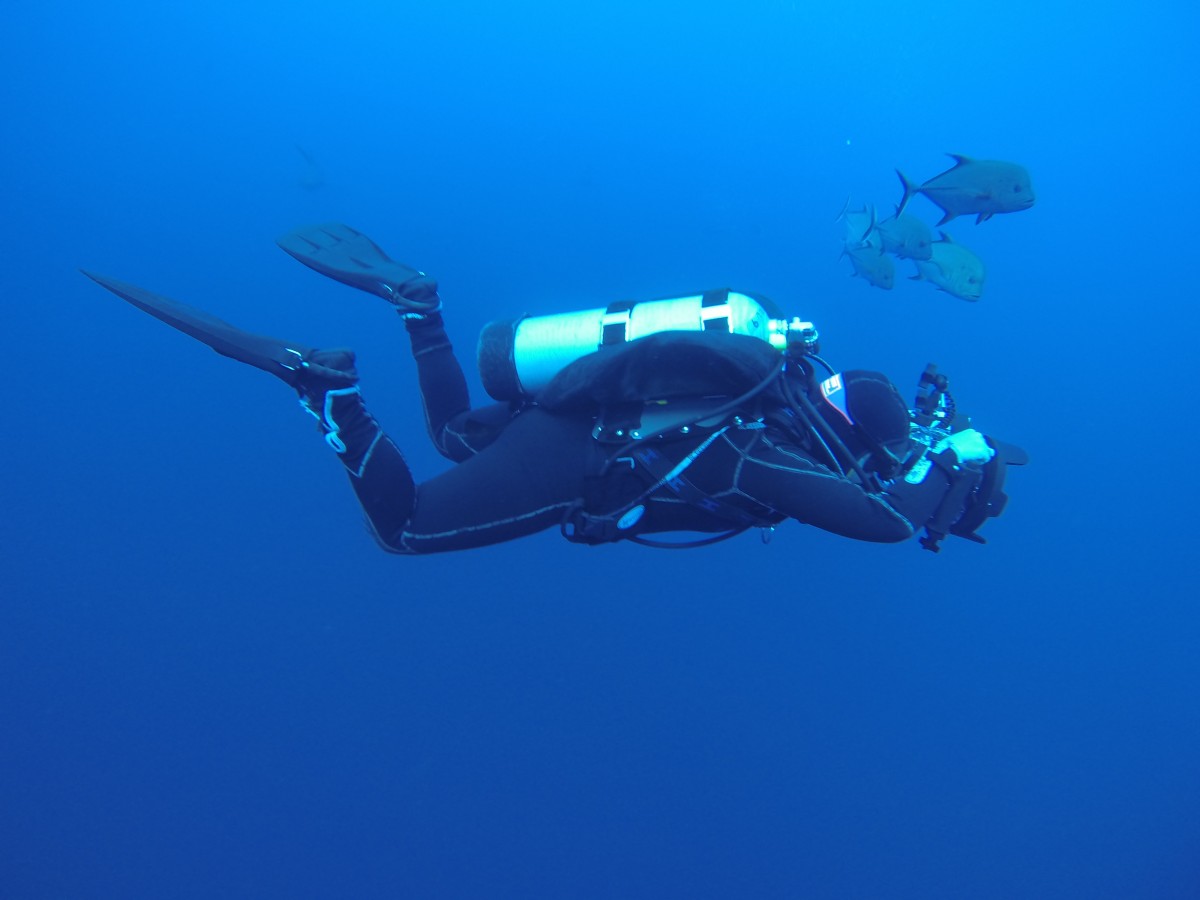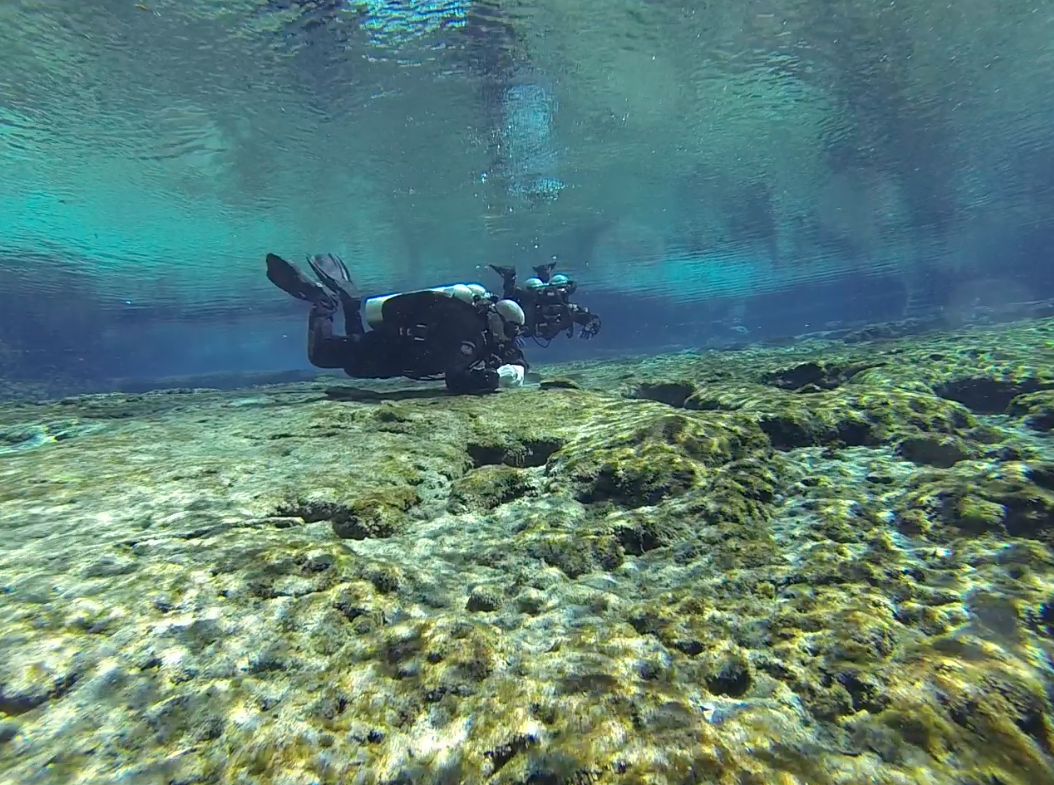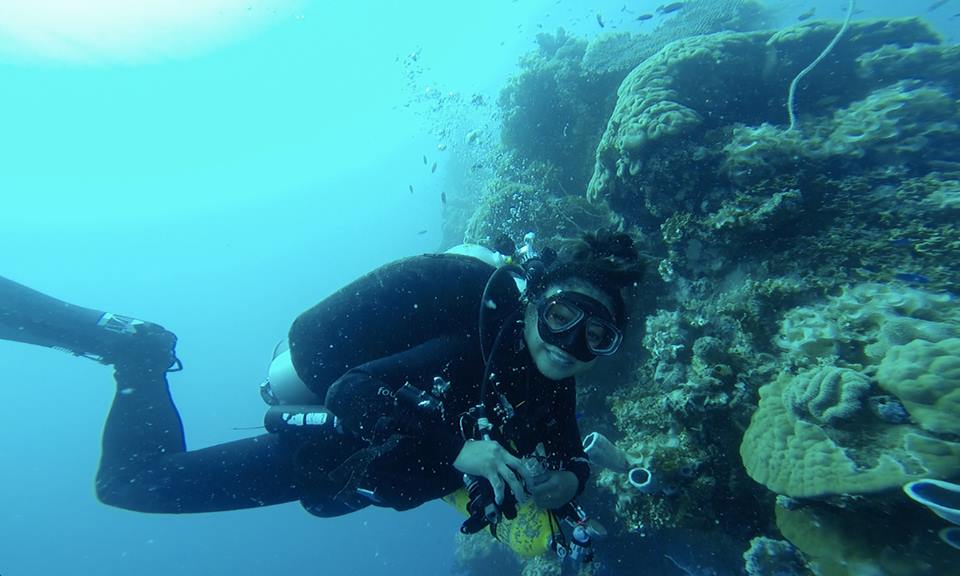Cave Diving – My Journey Into Diving Caves
by
Matthew Mandziuk
A lot of people ask me about My Journey Into Cave Diving – How I Got Into Diving Caves, and the truth is that it wasn’t on purpose. It was once upon a time when I was in Mexico doing some instructor updates for TDI. I’ve been a Technical Diving Instructor with them for over 20 years and I was looking for a trainer that could teach me more than the people I had met or worked with here in North America were able to offer.
The Internet was relatively new to me…well most of us 20 years ago, but I had found a few trainers who kept coming up on WebCrawler and whatever other search engines I used…I think AOL. What drew me to Mexico was that the Instructor was seemingly offering something different in concept. His emails were more detailed even though English wasn’t his first language and the pictures looked like the gear was a lot tidier than my setup, which in those days was a very old school New Jersey Wreck Diving configuration, so I took a chance, hopped on a plane and went to Mexico.
We reconfigured my gear, as I was fascinated by how much cleaner and more streamlined the setup we were training new students on was and I embraced it all 100%.
It was knowledge that made sense and it made the diving so much more functional. (See the example of how my gear may or may not have looked at one point further down the post).
The Seasickness Day
One day we were out in the ocean boat diving in 14′ waves, when I got thrown from the boat by with all my gear on. Here was as good of a spot as any to drop on the wall, so we decided to drop right were I did and we conducted a nice 300’ trimix dive. As we entered the decompression phase of the dive shallower, the surge was very strong and I started getting a little queasy. After the stops were clear, we got tossed back onto the boat by the waves and we powered back to shore, I crawled tanks and all up the sandy beach on all 4’s and and kissed that unmoving ground. I likely even told it I loved it.
When my face wasn’t green anymore my Trainer started thinking about other less windy options and one of the ideas that popped into his mind was to do a deep sink hole, something I’d never seen before. I was in.
An Inland Road Trip
I remember the site well, Cenote Angelita. We drove into the jungle and parked a car, walked down a dirt pathway through the jungle of beautiful big trees, and we happened upon what looked like a tropical oasis in paradise. There were some tree roots we could use to walk down to the water way a little more safety and you could see down quite a ways into the water as the sun was peaking high in the sky just before noon.
When discussing the dive plan, we were briefed on the site and I got to discuss the dive with the dives I was diving with.
We walked our decompression cylinders down to the water and tied a line off a series of strangler fig tree roots to clip the tanks to so they didn’t slip off the ledge down to over 200’.
We put our suits and double tanks on and on the surface we conducted our s-drill and bubble checks, clipped our additional cylinders on and away we went.
I remember looking into the air clear water and I could see all the way down to the bottom at 90’ where there was a hydrogen sulphur cloud and a beautiful reddish coloured rock in spots around the basin.
We explored the sink which was very reminiscent of Yoda’s planet Dagobah with the steam on the surface unearthing the trees sticking through the cloud, except this was now happening underwater and was one of the most mind-blowing and interesting things I’d ever seen in my life.
After taking in my new favourite site above the cloud, we decided to go in through the cloud. As we descended through the hydrogen sulphur cloud, I could actually taste through my regulator a flavour of sulphuric “rotten egg” which is a flavour everyone talks about. As I descended, I came into the darkness 40’ deeper and into a night dive like environment environment. HID Lights were just starting to come onto the market and it was my first time seeing a Halcyon 18w HID light in action. the blue light was so amazing. I was still using a 2 section car battery pack powering a 50w Halogen lamp, so my beam was yellow.
As I took the time to take in this new environment, I noticed a lot of branches, roots, a massive hour glass shaped debris cone, just like I’d read about in the many books I’d read on the Yucatan Peninsula and the water was even clearer below the cloud that above, which we could easily see the entire length of the basin above and below over 300’ of clarity on this day.
We kept following the debris cone downward towards the bottom which I could see getting closer and closer and we stopped at a cavern entrance with a beautiful speleothem hanging and all of the divers lit up the entrance with their high tech HID lights and my halogen lamp.
I Was Mind Blown…
I was mind blown and the entire dive had eclipsed all of my best dives in quality, uniqueness, clarity of water, cool things to see. I’d gone from never diving a sink hole to never seeing spelotherms, to being thrown into a new world of let’s discover what else is out here and a trip that was only supposed to be 1-2 weeks lasted a month, as I so excitedly and enthusiastically ascended after our decompression ended and smiling ear to ear they asked how I liked that site!? My reply was that it was the best dive ever. They later replied, if you like that we have some even bigger and better treats for you “Farmer” (in response to being seasick and kissing the sand the day before).
We did a second dive at Angelita was just as good, but a bit shallower as we broke 200′ of depth on the first dive. We had even more time to swim around and play in and out of the hydrogen sulphur cloud. It was very memorable.

Photo by Matt Mandziuk
Upon feeling renewed and excited, we did a bunch of other fun dives in the area and all these big deep sink holes just made me more curious about what else was inside them.
One day I was asked to teach a decompression lecture for a bunch of cave students and was convinced to join on the open water skills dive on day 1 of these students working on their cavern skills. It was pitched to me that I could learn how to use a reel better and it would help make the best wreck diving class in the world.
The day we did the class, then we started working on dry land drills and having never actually been taught to run line and only reading from the old NSS-CDS and NACD cave books, I was excited to see how they did things, so I sat and watched and when the students were done, I too had a chance to play with the reels and line following and then I joined the group during the simulated air sharing while blindfolded and communicating during “touch contact” and I thoroughly enjoyed being blind and feeling the way the line in my hands moved left and right and up and down and how I could use the sense of touch to feel the plastic navigational markers as a way of knowing roughly where I was and what direction was out.
I was done all of my TDI Technical Instructor upgrades and lectures by this point and it was time to immerse myself into something new. Cavern Diver Training!
My first cavern training dive was in 20’ of open water at a cent called Car Wash. It was the most intense dive of my life because I was taking everything so seriously. We have a great Cave 2 Skills Video summary of some of the skills online if you’re interested CLICK HERE.
For those who know me, I’m a pretty OCD and very thorough person when it comes to diving. I’m hypersensitive to things and usually very very aware and I liked this because it was challenging me in a new and different way.
For those who have done a Wreck Penetration, Intro to Tech, Cavern or Cave class with me, I’m sure you’ll remember our 20-30’ dives too. The shallow skills development dives set the bar for things to come.
On my Cavern Training it was not different. We spent 1.5 hours in 20’ of water doing air shares with and without visibility, with and without a buddy, we simulated a lost guideline deploying a safety/backup reel and had to relocate the line, tie-off our safety line and follow the mainline until we found an arrow marking our exit and make an exit in the proper direction.

Don’t Be Intimidated….
While many people find a dive like serious training dive to be intense or intimidating, it just made me want more. As a matter of fact, I took the next dives so seriously that it took me 20 minutes to even realize we were in a cavern because I was so focussed on the team, the communication, the line placements and etiquette, among the other pre-dive rituals we had ahead of the penetration into the cavern, that it felt more organized diving this way.
Once we tied into the main guideline I was able to break a sigh of relief that we found it and then I was able to stop and take it all in and this cavern became something that allowed my body and mind to slow down and take it all in as the stillness was enhanced, my breathing rate lower than the last 20 minutes had been and and I heard every heart beat, the sound of every breath flowing through my long hose towards my mouth and the lights all cascading a beautiful array of light patterns around this magical limestone paradise that were created millions of years ago.
As the divers began to signal the turn and exit and somehow one at a time had “equipment failures” with masks being removed, primary lights failing, people running out of gas, etc., I was watching and waiting for my time to exit and don’t really remember if/what the problems I would’ve encountered were, but again after sorting our gear back out when the scenarios were over, and our safety stop completed, we ascended into another monumental emotional diving bliss moment as we were all smiles and ready for the next challenges.
True Beauty…
The thing I loved most about the cave diving training were the beautiful caves we were training in. Seeing the ice-age looking formations that resemble the frozen icicles at a waterfall were hypnotic, as were the stalactites and full columns (once I was able to start enjoying them and paying less attention to the main guideline or the equipment that I knew was going to “fail” on the exit).
The skills that we had to do on the class were addictive and I even “died” on my lost line drill, which is a survival skill we do as we simulate losing the primary line and having to tie off our safety spool on a rock and blindly feeling for the primary line, hoping to hook it with our reel, or even our equipment or body.
Skills that like were very sobering and they drove home the importance of paying attention to the team and surroundings at all times.
Learning to navigate a jump from one line to another cave line was another wonderful skill too, as it extended our range into these cave passages.
What I loved most about cave diving were the rules and how organized cave diving made me feel. I used to always say Wreck Divers used brawn and Cave Divers used brains. I’m a big advocate of diving smarter, not harder and Cave Diving was something that just made sense.
One of the most interesting aspects of the Mexican cave sites was the haloclines, a phenomena of waters of different density and temperature that can create a visual disturbance like mixing fresh water into a glass of saltwater resembling how a road shimmers in the hot summer heat.
Here you’ll notice the fresh water layer on top pushing, mixed water in the middle with the salt layer along the bottom.

A thermocline can get more brackish as your pass through the layer and it creates a greater mix of the salt and fresh water which can obscure view of the main guideline. Learning how to dive in Halocline Formation is important.
I learned some valuable lessons on the cave class as well and helped reconfigure my equipment, as I maybe had some “wreck diving” equipment, but not stuff gear that was as streamlined or as functional as the gear I ultimately embraced. Even a little think like the importance of a good pair of fins. I was an advocate of Mares Quattro’s for years, they were a fantastic pair of fins, but couldn’t figure out why I was having to kick to keep up with some of the other divers, given I was running 5 km’s/day, my friend Nick said to me straight up “it’s your fins. They’re too big, bulk and too inefficient”. I switched to Jet fins after I got to try them minutes later and never looked back.
Technical Diving at DDS Looked Reminiscent of this in the ’80’s and ’90’s. Lots of Gear and Task Loading with hoses ,tanks and gauges galore. Be Blessed You’re Learning the Right Way from Open Water On. This is Why Divers Come From All Over North America to Train with DDS.
The importance of the right equipment that suits the team’s mission and members best is very important and another favourite aspect of cave diving, as those team members can help with the line tension, retrieving arrows or cookies if asked, while having their gear rigged the same way in the same location always.
I remember on one of my first cave trips back to Mexico, I got to dive in one of my favourite Mexican cave, where we navigated through 3 different cave systems on 1 dive! Now of course each cave once it’s connected becomes part of the biggest cave system, but once upon a time they were 3 separate cave systems.
With proper dive planning, great gas consumption and the right safety gear, cave diving can be one of the most enjoyable and stimulating styles of diving ever.
Cave Diving is Not Dangerous. Breaking the rules, exceeding your level of training or experience is. The caves have been here for thousands and millions of years before divers started exploring them, they’re not the hazard, human error is.
In Cave Diving they use the expression “There are Old Cave Divers and There are Bold Cave Divers, but No Old Bold Cave Divers”. Having lost friends diving, it’s not fun, but at some point a rule was broken or a training limitation in the majority of the losses I’ve had to endure. Thinking of your friends and family first will act as insurance in wanting to return home safely, so that you don’t make unnecessary risks and you can keep your mind in the game.
Don’t Make Unnecessary Risks, it’s not worth it.

From Student to Teacher and Explorer
My cave training opened me up to a lot of amazing adventures, but the faster approach to the training was something I wasn’t as keen on.
Many divers do a “zero to hero” cave class in certain places, it’s not to say it can’t be done, I did it, however, I was the only diver who knew how to frog kick, turn or fin backwards along with 2 students who’d done open water and advanced with the same instructor in a backplate/wing, but reverse frog wasn’t a required skill, nor was any previous experience in doubles and this is still the case in a lot of the more mainstream agencies.
I really felt like the other students could’ve benefited from a foundational skills class which really was just starting to become a thing 20 years ago. It was rare that divers would have learned the foundational skills and have proper horizontal trim. A Cave Instructor in Florida one day told me they are there to teach a student as much as they can in a week so they don’t die in a cave. Many have never worn doubles, been horizontal or frog kicked, so they do the best they can and they offer them the opportunity to re-take the course within 6-12 months of they practice and get the diving in, but what they really should do is teach them the foundational skills first and then focus on the cave skills/training next. On my cave class the others were new to all the gear and techniques and the open water dives we had done prior to the cavern dives were designed to try and teach them the basics of modern diving.
Cave diving was a lot more mental for me than physical, having to think of the procedures to lay a clothes pin (now we use cookies) or when to arrow and where, as I felt we were hit with a series of navigational decisions and there was a lot of additional gear thrown in like stages and so on.
Complex Navigation involves multiple navigational decisions, entering and exiting in different places, doing circuits, T’s, traverses, set-up and clean-up dives to execute the dive properly.
It wasn’t until I got out on my own exploring new caves, some known, some undiscovered cave sites that I started to gain or retain the knowledge and apply it. I had the skills, I could do the drills, but putting them to practical use was really what made me feel like a cave diver and made me a better diver.
Many divers are quite content just following the main guideline in and out, it’s enough for some people and definitely how you’d want to start off if you haven’t done a cave dive for a while. Ease yourself into the dives doing easy navigation or what I often call diving like a “pedestrian cave diver”, as the simple tour is a nice way to reacquaint yourself with the caves and running the reel and tying into the main guideline, you can assess the conditions and note the navigational jumps or places of interest for future dives.
When it came time for me to be teaching Cavern Diving, I had no interest in teaching Cave Diving. I had a few friends in Florida and Mexico who I’d send friends to dive with and train and that was good enough, but none of them really stuck with it and my local divers were getting more and more keen to go to see these amazing springs and cenotes.
All of the years I spent in Florida and Mexico started mounting up, I started seeing the masses who were cave diving and they were destroying the fragile stalactites in Mexico or breaking the limestone features of the Florida caves. My favourite decoration in Ginnie Springs got destroyed last year I named it “Scooby Doo” Rock and one day someone decapitated Scooby likely with Doubles or a Run Away Scooter.
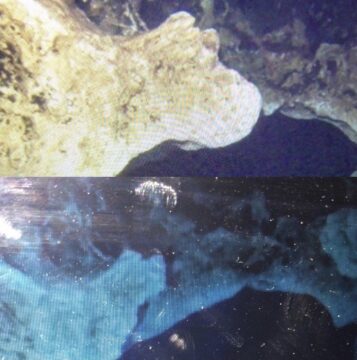
As more years went by, I started seeing people flutter kicking even in a no flow cave in Split Fins destroying the visibility, hand swimming and vertical diving habits, along with people pulling hard on the cave guidelines which should never be pulled or heaved on, and only held with caution letting the line slip effortlessly through your fist as you grip it in a touch contact hand position. Most divers didn’t know how to run line properly or at all, while some people were just running a single long line for 200’ into the caves and tying in to the main line with no regard for the other lines, divers, teams or anything.
During those days, it was our Divers loved ones who were telling me that they didn’t trust anyone random person to train their loved one’s and they insisted when their loved one was ready to step it to the next level that I’d be teaching them because if I was the only one they trusted 100%, which was flattering and I accepted eventually, which turned out to be a great move.
For the last 13 years I’ve enjoyed teaching caverns and caves, but finding a cave agency I could relate to and enjoy working with was a serious decision too. I teach for 5 different agencies, but what I wanted out of an agency was a brand that suggested divers get more diving in between each level, much like I had wished I’d done vs the “Zero to Hero” approach, so I looked at all the agency standards and all of the prerequisites that each agency insisted on and none of them were requiring experience in doubles, or a foundational skills series of skills such as fin kicks or horizontal trim, posture, buoyancy, which is why I looked at NAUI as my preferred Cave Diving agency. Seeing the NAUI Standards was a game changer for me.
NAUI allowed divers to dive a 1/3 of their gas in, out and exiting with 1/3 for reserve, while the majority were doing 1/6th in/out and 2/3 let for exit. No jumps off the mainline, or 1 at best. Being able to participate in multiple navigational decisions was also a great offering, as was the depth limit of 100’ max, no stop limits and insisting certified Cave 1 Divers had to log 20 logged Cave 1 dives after their certification above and beyond their cave training dives, obtain a technical certification before engaging in Cave 2.
There were gaps left in my basic cave training that I saw as a bit of a short coming with some of my dive buddies on my cave class not knowing how to fin using a modified frog kick, not having experience in doubles, trim, reel handling or line awareness prior to a NAUI Intro to Tech Class, no experience with stage/deco/ bottles prior to being handed them in a cavern/cave setting, lack of familiarity with canister lights and back-up lights, rescue diving scenarios dealing with oxygen toxicity and more.
Cave Diving has given our Canadian Divers another way to keep their skills sharp during the winter months and while most divers fade in and out of the recreational diving spectrum, I do find that those who commit to an Intro to Tech/Cavern course and actually pass, never stop diving, as Cave 1 and Cave 2 become their next classes and then as it’s been now 11 years later many of those Cave 1 and 2 divers are still joining us on our trips today.
Cave Diving offers some amazing exploration opportunities, some great personal challenges and some different opportunities for photography and other offerings too.
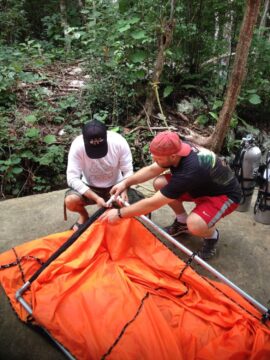

Avoid Rushing Through Basic Training and Into The “Trendy Toys”
There is never a substitute for experience. Getting your skills in place and your hours up are the only true way to become a proficient diver. It doesn’t happen easily or overnight.
Surround yourself with a group of Divers you can learn from. We use a mentorship mentality that helps prepare new DDS Divers who aren’t trained in the DDS philosophies and we encourage our “home grown” Divers to stay as active as they can and to get involved as much as they can.
We are trend setters and people that were responsible for helping establish many of the protocols and procedures now taken as the bible of diving.
We innovated the most modern Sidemount Configuration before anyone started diving long hoses and embraced the most modern CCR Rebreather Configuration with back mounted diluent and off-board O2 before it was the norm.
A lot of divers jump into certain concepts because the wrong people are promoting the wrong progressions, maybe it’s because they themselves couldn’t dive the right gear for a physical reason like shoulder surgery or bad back, but nothing is better off a boat or driving a scooter than doubles.
Sidemount is a tool to get you into a place you can’t fit on singles or doubles or for shore diving. It is better suited after Cave 2 when the divers have extensive cave experience, the ability or desire to do tighter passages or “no mount” passages even. Sometimes caves are not accessible on doubles, so Sidemount is the Correct Tool Here.
There are many caves that are simply too tight to get into with doubles, so once you’re familiar with all the cave diving has to offer, Sidemount becomes another tool you can use for expeditions where you don’t know if the cave will widen or narrow further.
Sidemount is Not for Mixed Gas Diving and is a horrible choice when diving off a boat, especially if people are diving an unrefined Sidemount configuration which is typically what we see locally from most shops/instructors/divers who are not cave divers.
Sidemount is amazing in places where doubles aren’t available for rent, because you can maintain the redundancy. Sometimes on shipwrecks or in caves, doubles don’t fit, so Sidemount is the tool of choice as well as for those who medically can’t reach their valves due to spinal or shoulder injuries (having an ill-fitting drysuit/undergarment are no excuse).
Rebreathers with small little 2-3 litre cylinders are also an issue we have. Most Cave Divers Do Not Carry Enough Bailout Gas. A Cave Level 1 Dive = 140ft3 bailout minimum. A Cave Level 2 Dive = 225ft3 bailout Minimum. This means said Cave Diver Needs to be excellent with multiple Decompression Cylinders. In NAUI Cave 2 Divers Learn to use 3-4 additional bottles plus doubles.
Get Good on Stages and Doubles Before Venturing into Sidemount or Rebreather. Once you’re proficient in those styles of diving You can do DPV Overhead/Cave Course which may be safer on a CCR for gas time and efficiency as you’re travelling further back in the cave, but you should always swim it first on Open Circuit First and See how many cylinders it takes for if/when the DPV fails and you may swim on out of it for real.
Taking the right training, buying the right gear, putting in the right amount of time practicing is essential for any divers success. Don’t Rush into caves, technical diving, rebreathers, sidemount diving. Don’t Take Shortcuts in Your Training.
There are so many amazing dives sites at every depth level and ever training level you succeed at. There is always a next deepest, and next best as well.
Don’t even attempt to dive a Rebreather in a Cave unless you can hover motionless for 5 minutes no skulling horizontally, Knees Up, Fins Up, Arms Out in Trim and complete all the Foundational Skills with 2 Stage Bottles On. I say this because several people have been unsuccessful in Intro to Tech with us and jumped into a Rebreather and somehow got Normoxic Trimix certified standing and kneeling on the bottom, ascending holding the anchor mooring lines and flutter kicking silting out the ships just like their Instructors do.
Your Best Option for a Rebreather is Manual not electronic, so you’re in charge of your PO2 and can control your ascents easier without the set point screaming at your as the PO2 reduces on an automatic unit as it goes shallower while still trying to achieve it’s constant PO2. Run it at a .6 PO2 on ascent or manually. On Deep Cave Exploration a constant mass flow valve or needle valve modified from the original KISS Rebreather design is another great option.

Cave Diving is for Divers Who Have Elite Skills and Discipline and a Desire to be the Most Polished Divers They Can Be.
Spending a lot of time in Florida, Dominican, Mexico and enjoying the recreational and exploration aspects of cave diving have been very fulfilling. I throughly enjoy expedition style diving, having been featured in magazines, YouTube videos, agency and personal expedition projects, including helping friends map the largest cave system in the world, just a couple of years ago, in a land so far away from this Covid pandemic are what keep me motivated and keep me going forward.
If Cave Diving Interests You, Do it Right. Take a Foundational Skills Class with DDS. If you’re curious about doubles, take a NAUI NTEC Doubles Workshop with Us, which will start you down the right path in equipment configuration basic foundational skills, while our NAUI Intro to Tech Course is the best Foundational Skills Class there is. It offers the right skills, information and adventure. Intro to Tech dovetails seamlessly into Cavern/Cave 1 too, so do it right and take the best training path. Don’t leave gaps in your training. Don’t Rush and Never Accept a Certification Card You Yourself Do Not Feel You Earned.
Our Cave, Wreck, Overhead and Technical Diving Courses are The Best in the industry! No other training agency offers a more through and complete Cave Diving Education and having such a small number of Cave Instructors keeps the quality high and the demand high.
Going from a Left Post Breathing Hose Stuffer to one of the First DIR Based Diving Instructors was the best move we made as a shop. Divers come for the best training offerings from around the Canada, the USA and other countries. I’ve been a Top Certifying Technical Diving Instructor over the last 20+ years and with your help will continue to offer the Highest Calibre of Recreational, Cave, Technical, Sidemount and Rebreather Training Possible.
Seeing the benefits of Divers learning in backplate/wing from open water, encouraging continuity in gear configuration, improving team diving communication and functionality and being able to up the game whenever possible are just some of the ways we’ve helped set the standard higher.
I am frequently involved in cave and shipwreck and other random dive expeditions of known and unknown entities and we continue to challenge myself and others through new environments and equipment whenever possible.
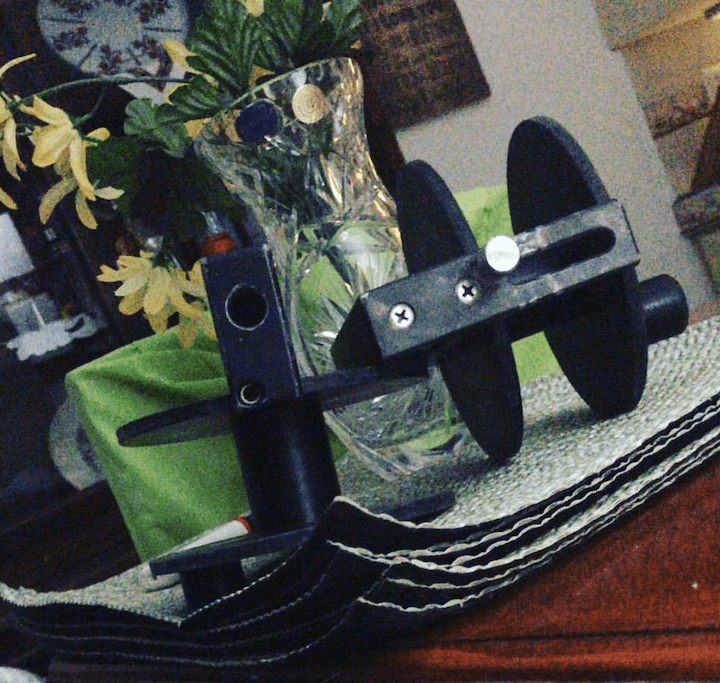
If You Want to Learn More About our Modern and Progressive Training Offerings, CLICK HERE

Matt Mandziuk
Follow Me On Instagram @divesith and @dansdiveshop
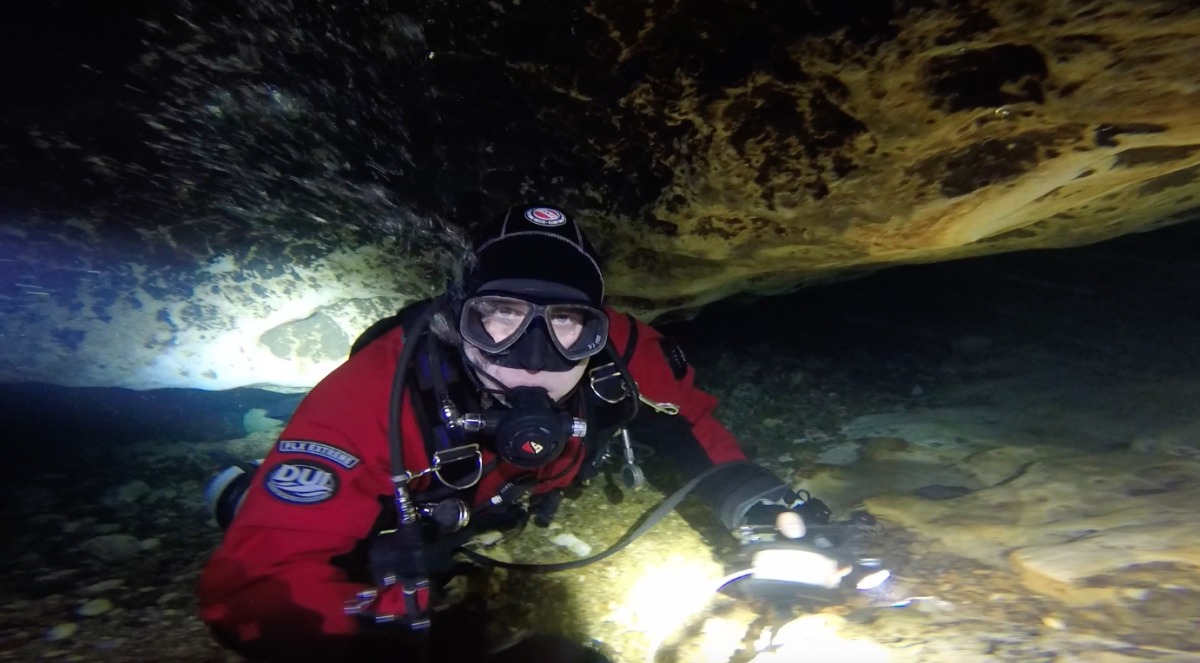
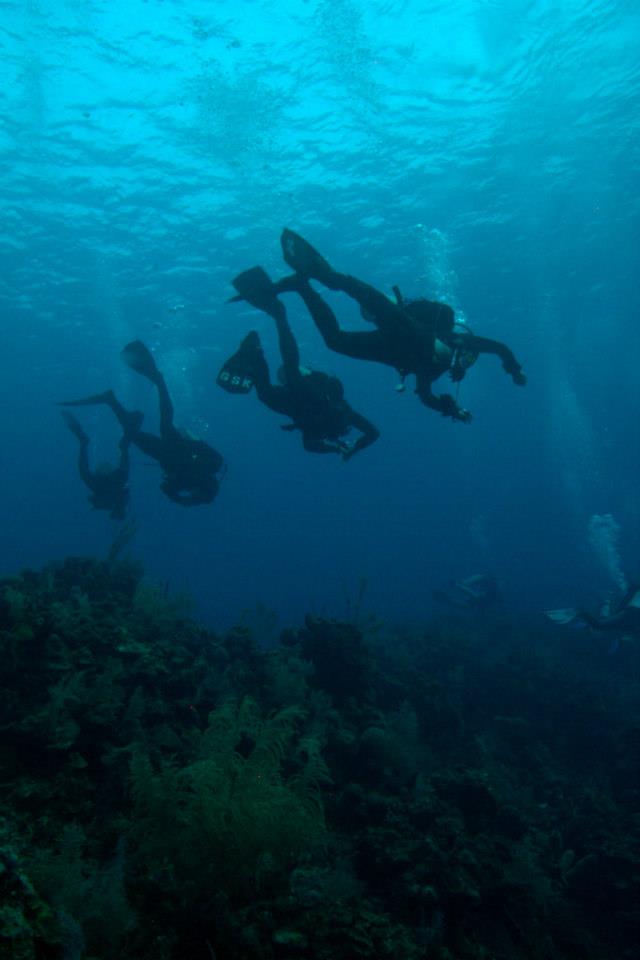

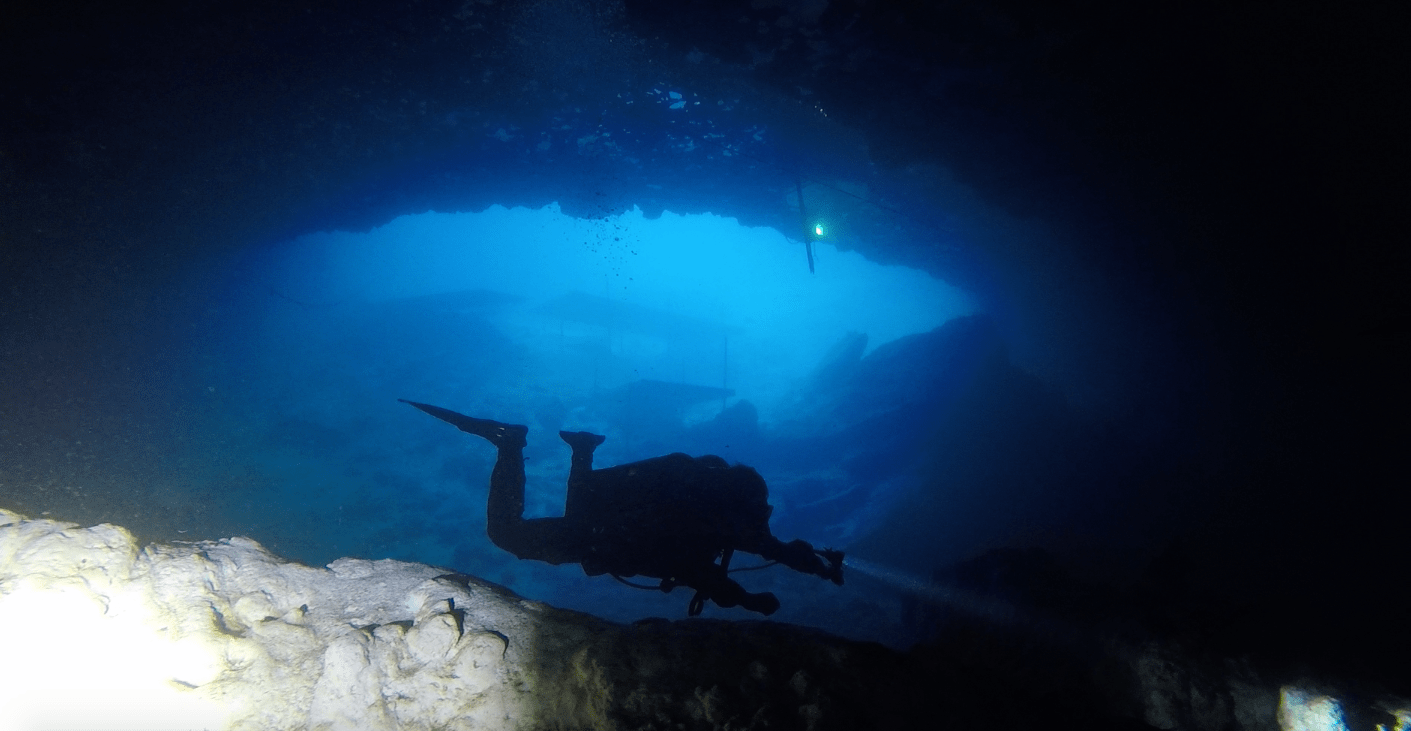 A properly trained DDS Diver working on trim and buoyancy during a NAUI Cavern/NAUI Intro to Tech Foundational Skills course.
A properly trained DDS Diver working on trim and buoyancy during a NAUI Cavern/NAUI Intro to Tech Foundational Skills course.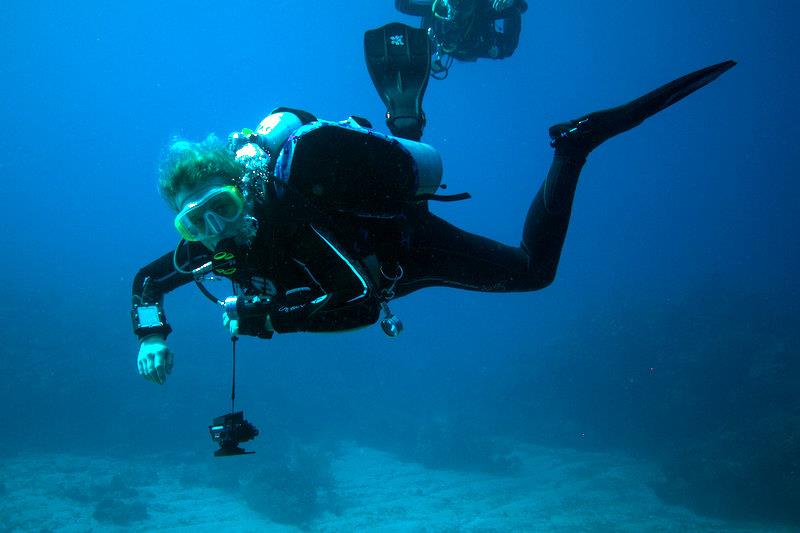
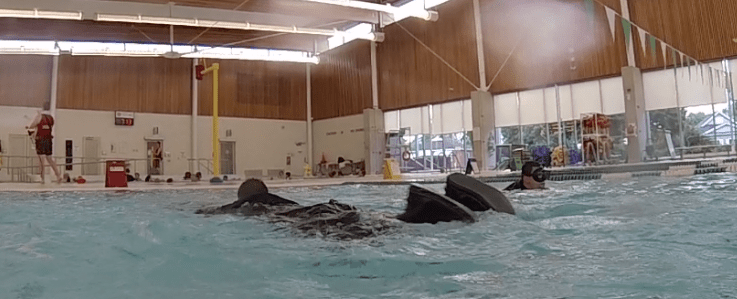


 DDS Divers are some of the highest trained divers in the country and they show a lot more finesse and discipline than most. Those divers who choose to work hard and grow their diving abilities are often asked to join in on bigger, better dives, as well as for support projects both local and abroad.
DDS Divers are some of the highest trained divers in the country and they show a lot more finesse and discipline than most. Those divers who choose to work hard and grow their diving abilities are often asked to join in on bigger, better dives, as well as for support projects both local and abroad.
